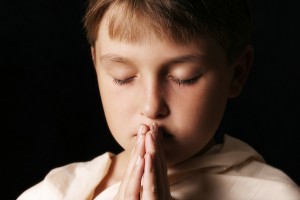A Dream Worth Having
By Robin Richmond Mason
Wednesday morning, I danced. My partner was a 1 ½ year old Noelle, who has a transformed a dining room into a dance floor. She and I shared some hours of reading, artwork, holophrase communicaiton and dance. Ah, I am grateful that the blinds were pulled and there were no other humans on site for the exhibit but in terms of fun, you can know that it was grand. She and I marched and twirled. We bowed and swayed with and despite rhythms. We played classic and nursery rhyme tunes. It was a glorious, shared romp that formed exclusive memories. I am quite certain that I enjoyed the prance much more than the toddler and when she fell into bed asking for a nap, I considered joining her with that request, as well.
Spending some exhausting time with our youngest grandchild reminded me of another sleepy time memory with another little child. This memory stared our son Andrew when he was four years old. (It seems as if that was yesterday.) He is a big, guy now. These days I hear him talk about dirt bikes and bass fishing and we haven’t danced around the dining room for years. Come back in time with me, as we reflect upon the timeless themes of which our children remind us.
It must have been about 2:00 AM when Andrew felt the need to wake his father and share his dream. Rodger was in a deep sleep when Andrew shook his arm and said “Dad, Dad, I need to tell you something”. Rodger roused himself enough to hear and our seven year old delivered the message. “I just figured out how to ride up on the porch and off again on my bicycle.”
Hum, now that is a heart warming message for a father and a mother to hear. We tucked Andrew back into his covers and within moments he was fast asleep. I reassured myself that he was probably dreaming about writing his multiplication tables or maybe memorizing the states and capitals or some other low risk activity, but I knew better.
Dreams are powerful. Pulitzer prize winning Marsha Norman said, “Dreams are illustrations… from the book your soul is writing about you.” Her perspective seems true when I reflect upon the little man that I know our Andrew to be. He thinks like an engineer and aspiresto build and develop a “Paint Lick Robot Factory”. Maybe I should expect that it will be complete with a bike ramp, trampoline, 4-wheeler, and a never ending collection of costumes needed for fully dramatizing sword fights and archery. Oh, the frightful fun that raising children has brought into our lives.
In retrospect, the uneventful moments shared with our four, have been extraordinarily pleasurable and revealing. I like few things more than sipping hot chocolate on the porch swing with a child or two, taking a hike to gather wild flowers, or working on a mutual project. The conversations that flow freely during such activities often have left me with clues and concepts to ponder. Who is this miniature person? What are his/her inherent gifts? What passions speak to their hearts? Have we supported the healthy development of moral boundaries? Does this child see himself/herself as a purpose filled individual with a specific calling on their life? And then of course the eternal mothering question, “ Am I doing everything that I can to support the sacred trust of parenting this marvelous individual?”
The weight of parental responsibility is enough to prevent a dedicated adult from ever sleeping again. I do however find a great deal of comfort in research. I can’t resist the inclination to turn to science and research for many answers and solutions. In the arena of positive parenting, I see enormous amounts of research-based findings packaged as user friendly information with the Search Institute (www.search-institute.org). Thousands of caring adults have and do benefit from the 50 years of documenting the positive assets that support the healthy development of children and youth, as cataloged by the Search Institute.
For example the institute lists this assets under the category of External Assets Empowerment: Community values youth—Child feels valued and appreciated by adults in the community. In that same category we find, Service to others—Child has opportunities to help others in the community. What a refreshing thought! Research underscores the importance of children seeing themselves as givers and helpers. Youngsters blossom when they have a place in the community and when they find ways to contribute. Or how about this asset under the category of Internal Assets Self Competencies: Resistance skills—Child can stay away from people who are likely to get her or him in trouble and is able to say no to doing wrong or dangerous things. Then there is this asset in the same category: Personal power—Child feels he or she has some influence over things that happen in her or his life. Ah, I love it when essential truths are reaffirmed by contemporary research. In this most important of roles, I am not left to figure things out without any information. Nor am I excused when vital assets of character and support are absent from my children’s lives.
The thought of accountability is sobering. I find encouragement in recognizing one of the most powerful assets that Search Institute has found repeatedly. When this asset is present and internalized to the level of a personal commitment from the child, about 30 of the other assets also appear. The asset that carries an enormous amount of weight is the asset of the child having a personal religious identification and commitment.
Ah, ha! I knew it! Research affirms the wisdom of my parents and grandparents. When a child sees himself or herself as a priceless creation made in the image of God and when they are parented like that treasure, many other positive assets follow. One of the ones that follows is found in the category of Internal Assets Personal Identity Positive view of personal future—Child is optimistic about her or his personal future. Right there, you and I can write in a side note, “the ability to dream”. When children have enough positive assets in their lives, and especially the really essential ones, they have the capacity and natural inclination to dream.
So, perhaps I can feel very good about Andrew’s dreaming ability and that similar whimsical quality in his sisters. I can also feel very good when that ability stirs within my own soul and that of other adults around me. C.S. Lewis said “You are never too old to set another goal or to dream a new dream.” I love that affirmation.
Research shows that physical, emotional, communal, and spiritual environments either support or suppress a child’s ability to dream. It may be that we can extrapolate that linkage to human experience at all stages. If that is true, then we might recognize a very pertinent challenge. As our country continues to struggle through the present challenging economic times, community and personal resources are stretched. Individuals can calculate deficits that out weigh their visible assets. But the visible may be far less important at this moment, than the invisible. We need to dream and we need to stoke up the dreams in those around us. We need to belong to and with each other. We need to see ourselves as givers and agents of positive change. We need to sink our feet deeply into our religious heritage and lift our eyes to God’s calling for tomorrow.
I could write volumes and site more contemporary research and sacred wisdom. However, I’d rather end with a reminder from the Old Testament. Proverbs 29:18 says, “Without a dream the people perish.” Friends, I invite you to join with me in having no intention of perishing not as long as there are bikes waiting to be ridden and robot factories to build.






